Research
The evolution of antimicrobial resistance is strongly reducing our options for antimicrobial treatment, both in agriculture, industry and medicine. At the same time regulatory demands on microbial safety, waste water limitation, and biocides have never been so strict. We urgently need new antimicrobial strategies, therefore, but most importantly we need strategies where the evolution of resistance is less rapid.
Most current antimicrobials have been designed to act against free-living bacteria. Over the last decades it became clear, however, that microbes commonly live together in dense and genetically-diverse communities. If these communities are surface-associated and embedded in a self-produced slime-layer they are generally called biofilms. Microbial communities often show a strongly increased tolerance against antimicrobials. New antimicrobial strategies, therefore, should take this community mode-of-life into account.
The MICA Lab studies microbial community behaviour and develops antimicrobials targeting communities. Our main goal is to obtain a better understanding of social interaction in microbial communities, resistance development in communities and methodologies to monitor communities in situ. This should allow us to develop novel types of antimicrobials that interfere with social interactions (socio-active strategies), resistance development (anti-resistance strategies) or take benefit of improved monitoring (observation-guided strategies). To support this research, we have set up an integrated development platform for antimicrobial compounds.
Social interactions
We aim to understand how microbes within communities interact with each other. It is increasingly recognized that social interactions between microbes can strongly enhance the tolerance and pathogenicity of communities. Social interactions therefore present an interesting target for novel types of antimicrobials (socio-active strategies), especially because in some cases resistance development is not expected. Our current research mainly focuses on social interactions within bacterial communities containing Salmonella, within contaminating biofilms in breweries and greenhouses and within biofilms on orthopedic implants and urinary catheters.
Publications
- Lories, B., Belpaire, T.E.R., Smeets, B. et al. Competition quenching strategies reduce antibiotic tolerance in polymicrobial biofilms. npj Biofilms Microbiomes 10, 23 (2024). https://doi.org/10.1038/s41522-024-00489-6
- Svet, L., Parijs, I., Isphording, S., Lories, B., Marchal, K., & Steenackers, H. P. (2023). Competitive interactions facilitate resistance development against antimicrobials. Applied and environmental microbiology, 89(10), e0115523. https://doi.org/10.1128/aem.01155-23
- Podnar, E., Erega, A., Danevčič, T., Kovačec, E., Lories, B., Steenackers, H. & Mandic-Mulec, I. (2022). Nutrient Availability and Biofilm Polysaccharide Shape the Bacillaene-Dependent Antagonism of Bacillus subtilis against Salmonella Typhimurium. Microbiology Spectrum doi:10.1128/spectrum.01836-22
- Belpaire, T.E.R., Pešek, J., Lories, B. et al. Permissive aggregative group formation favors coexistence between cooperators and defectors in yeast. ISME J 16, 2305–2312 (2022). doi:10.1038/s41396-022-01275-y
- Lissens, M., Joos, M., Lories, B., Steenackers, H.P. (2022). Evolution-proof inhibitors of public good cooperation: a screening strategy inspired by social evolution theory. FEMS Microbiology Reviews (Online ahead of print). doi: 10.1093/femsre/fuac019
- De Wit, G., Svet, L., Lories, B., Steenackers, H. (2022). Microbial Interspecies Interactions and Their Impact on the Emergence and Spread of Antimicrobial Resistance. Annual Reviews of Microbiology (Accepted), 76. doi: 10.1146/annurev-micro-041320-031627
- Maes, S., De Reu, K., Van Weyenberg, S., Lories, B., Heyndrickx, M., Steenackers, H. (2020). Pseudomonas putida as a potential biocontrol agent against Salmonella Java biofilm formation in the drinking water system of broiler houses. BMC Microbiology, 20, 373. doi: 10.1186/s12866-020-02046-5 Open Access
- Lories, B., Roberfroid, S., Dieltjens, L., De Coster, D., Foster, K.R., Steenackers, H.P. (2020). Biofilm bacteria use stress responses to detect and respond to competitors. Current Biology, 30 (7), 1231-1244. doi: 10.1016/j.cub.2020.01.065 Open Access
- Parijs, I., Steenackers, H. (2018). Competitive inter-species interactions underlie the increased antimicrobial tolerance in multispecies brewery biofilms. The ISME Journal: multidisciplinary journal of microbial ecology, 12 (8), 2061-2075. doi: 10.1038/s41396-018-0146-5 Open Access
- Spacova, I., Lievens, E., Verhoeven, T., Steenackers, H., Vanderleyden, J., Lebeer, S., Petrova, M.I. (2017). Expression of fluorescent proteins in Lactobacillus rhamnosus to study host-microbe and microbe-microbe interactions. Microbial Biotechnology, 11 (2), 317-331. doi: 10.1111/1751-7915.12872 Open Access
- Lories, B., Parijs, I., Foster, K.R., Steenackers H. (2017). Meeting report on the ASM Conference on Mechanisms of Interbacterial Cooperation and Competition. Journal of Bacteriology, 199 (22), e00403-17. doi: 10.1128/JB.00403-17 Open Access
- Steenackers, H., Parijs, I., Foster, K., Vanderleyden, J. (2016). Experimental Evolution in Biofilm Populations. FEMS Microbiology Reviews, 40(3), 373-397. doi: 10.1093/femsre/fuw002
Resistance evolution
We aim to understand how resistance development in microbial communities differs from resistance development in isolated, free-living microbes. Our recent experiments indeed indicate that different aspects of the microbial community mode-of-life can promote the evolution of resistance against conventional antimicrobials. This demonstrates the potential of 'anti-resistance strategies' that interfere with community behaviour to enhance the longevity of conventional antibiotics. Our current research mainly focuses on resistance development in Salmonella biofilms, in brewery biofilms and biofilms on orthopedic implants and catheters.
Publications
- Joos, M., Van Ginneken, S., Villanueva, X. et al. EPS inhibitor treatment of Salmonella impacts evolution without selecting for resistance to biofilm inhibition. npj Biofilms Microbiomes 11, 73 (2025). https://doi.org/10.1038/s41522-025-00693-y
- Brepoels, P., De Wit, G., Lories, B., Belpaire, T. E. R., & Steenackers, H. P. (2024). Selective pressures for public antibiotic resistance. Critical reviews in microbiology, 1–10. Advance online publication. https://doi.org/10.1080/1040841X.2024.2367666
- Brepoels, P., Appermans, K., Perez-Romero, C.A., Lories, B., Marchal, K., Steenackers, H.P. with Steenackers, H.P. (corresp. author) (2022). Antibiotic Cycling Affects Resistance Evolution Independently of Collateral Sensitivity. Molecular Biology and Evolution, 39 (12), Art.No. ARTN msac257. doi: 10.1093/molbev/msac257
- Dieltjens, L., Appermans, K., Lissens, M., Lories, B., Kim, W., Van der Eycken, E., Foster, K., Steenackers, H. (2020). Inhibiting bacterial cooperation is an evolutionarily robust anti-biofilm strategy. Nature Communications, 11 (1), 107. doi: 10.1038/s41467-019-13660-x Open Access
- Steenackers, H., Parijs, I., Foster, K., Vanderleyden, J. (2016). Experimental Evolution in Biofilm Populations. FEMS Microbiology Reviews, 40(3), 373-397. doi: 10.1093/femsre/fuw002
- Roberfroid, S., Vanderleyden, J., Steenackers, H. (2016). Gene expression variability in clonal populations: causes and consequences. Critical Reviews in Microbiology, 42 (6), 969-984. doi: 10.3109/1040841X.2015.1122571
- Pulido-Tamayo, S., Sánchez-Rodríguez, A., Swings, T., Van den Bergh, B., Dubey, A., Steenackers, H., Michiels, J., Fostier, J., Marchal, K. (2015). Frequency-based haplotype reconstruction from deep sequencing data of bacterial populations. Nucleic Acids Research, 43 (16), e105. doi: 10.1093/nar/gkv478
In situ monitoring
The tolerance of a particular biofilm to antimicrobial treatment is highly dependent on its specific structure. Hence, rapid detection of biofilms and accurate monitoring of the biofilm structure, thereby predicting its tolerance to antimicrobial treatment, is of utmost importance. Today, however, no technologies exist that allow for in depth in situ biofilm characterization. In collaboration with several research partners, we aim to develop a novel sensor technology, based on impedance measurement by microelectrode arrays, that allows for in situ biofilm monitoring and prediction of its susceptibility to different types of antimicrobials.
Publications
- Shastry, A., Villanueva, X., Steenackers, H., Cnudde, V., Robles, E., Boone, M.N. (2020). Study on the Effect of Contrast Agent on Biofilms and Their Visualization in Porous Substrate Using X-ray mu CT. Applied Sciences-Basel, 10 (16), 5435. doi: 10.3390/app10165435 Open Access
- Maes, S., Vackier, T., Nguyen Huu, S., Heyndrickx, M., Steenackers, H., Sampers, I., Raes, K., Verplaetse, A., De Reu, K. (2019). Occurrence and characterization of biofilms in drinking water systems of broiler houses. BMC Microbiology, 19 (77). doi: 10.1186/s12866-019-1451-5 Open Access
- Maes, S., Heyndrickx, M., Vackier, T., Steenackers, H., Verplaetse, A., De Reu, K. (2019). Identification and Spoilage Potential of the Remaining Dominant Microbiota on Food Contact Surfaces after Cleaning and Disinfection in Different Food Industries. Journal of Food Protection, 82 (2), 262-275. doi: 10.4315/0362-028X.JFP-18-226 Open Access
- Goikoetxea, E., Routkevitch, D., De Weerdt, A., Green, J., Steenackers, H., Braeken, D. (2018). Impedimetric fingerprinting and structural analysis of isogenic E. coli biofilms using multielectrode arrays. Sensors And Actuators B: Chemical, 263, 319-326. doi: 10.1016/j.snb.2018.01.188 Open Access
Development platform for antimicrobial compounds
To support the above described research lines, the MICA Lab is coordinating an interdisciplinary platform for the development of antimicrobials, which is based on several collaborations with research groups within and outside the KU Leuven. This platform includes in silico and in vitro screening of antimicrobial agents, chemical synthesis and structure-activity-relationship studies, mode of action studies and evaluation of resistance development, and design of combination therapies and delivery strategies. More detailed information on this platform can be found here.
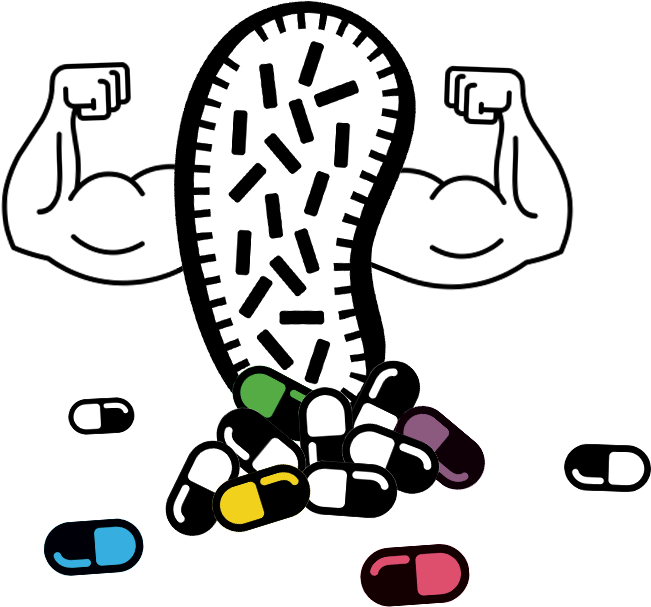
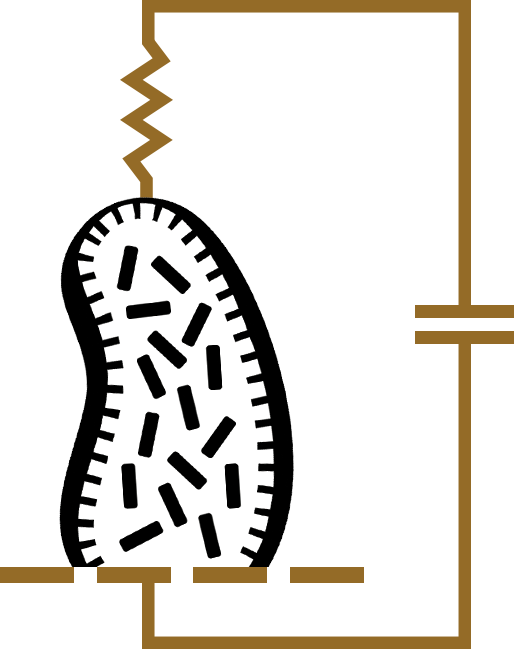
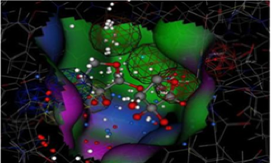
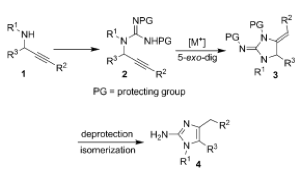
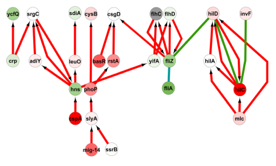
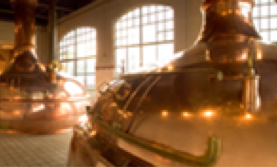
Social interactions in microbial communities
Socio-active strategies
Social interactions
We aim to understand how microbes within communities interact with each other. It is increasingly recognized that social interactions between microbes can strongly enhance the tolerance and pathogenicity of communities. Social interactions therefore present an interesting target for novel types of antimicrobials (socio-active strategies), especially because in some cases resistance development is not expected. Our current research mainly focuses on social interactions within bacterial communities containing Salmonella, within contaminating biofilms in breweries and greenhouses and within biofilms on orthopedic implants and urinary catheters.